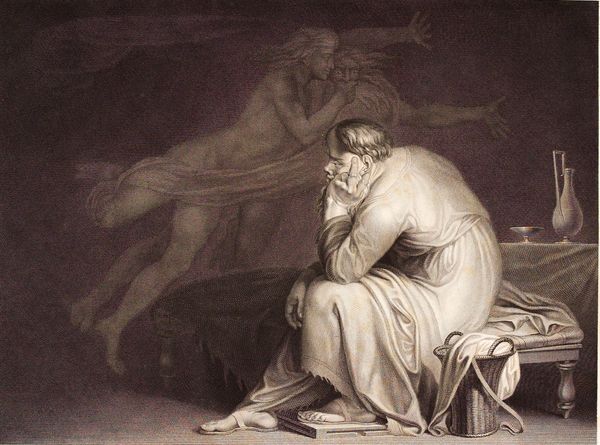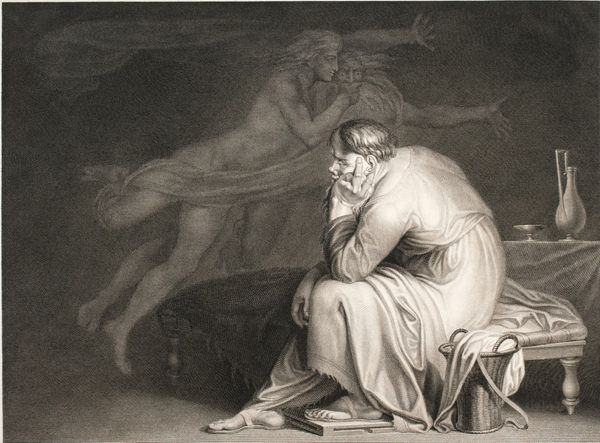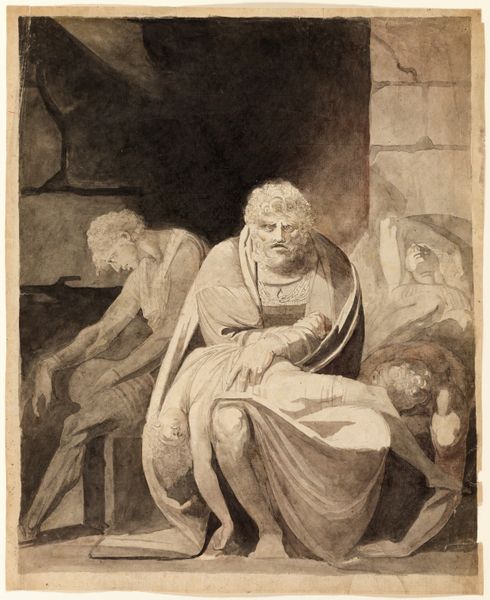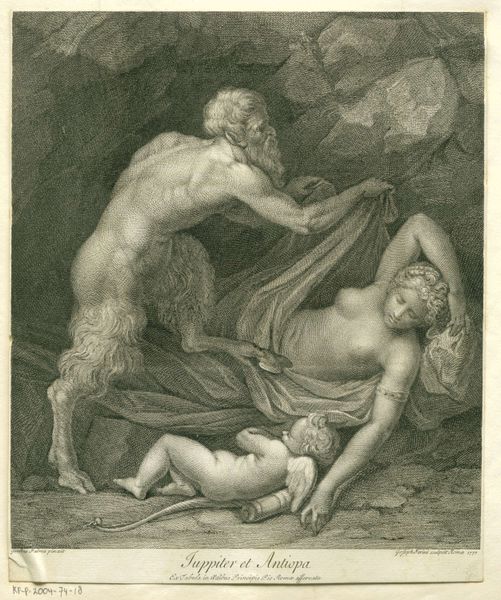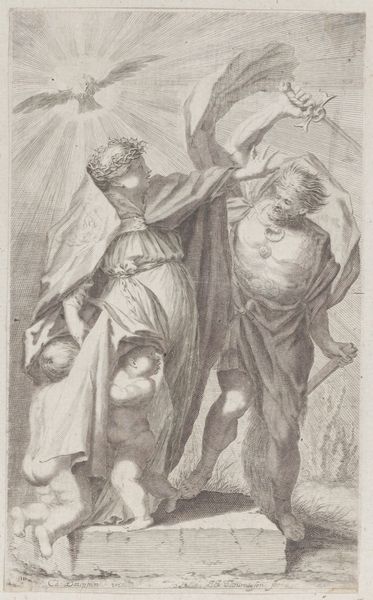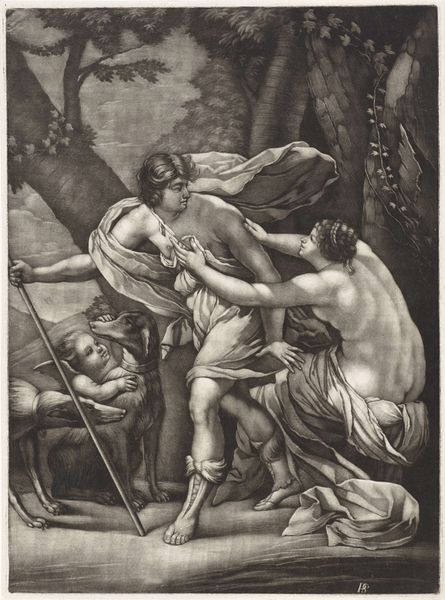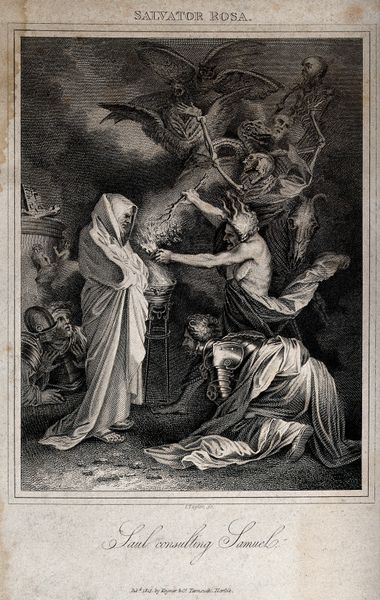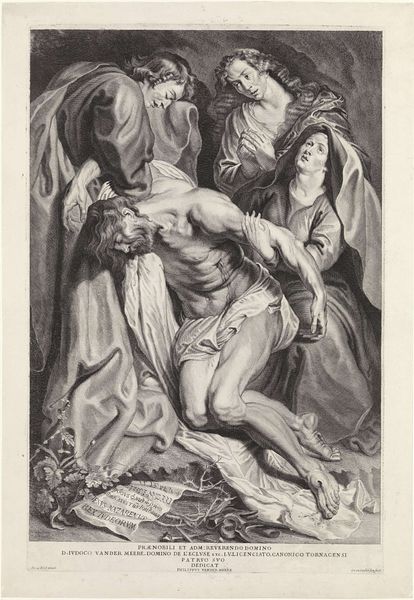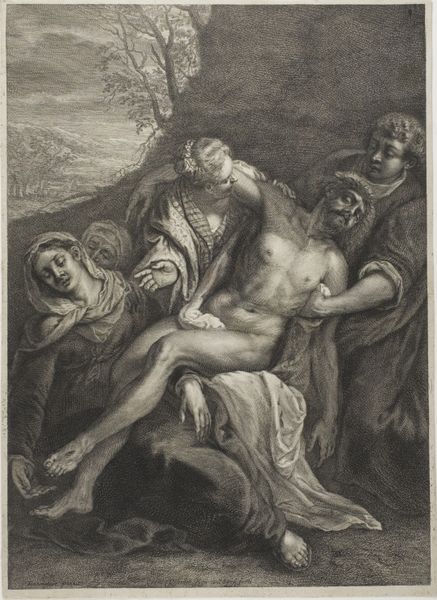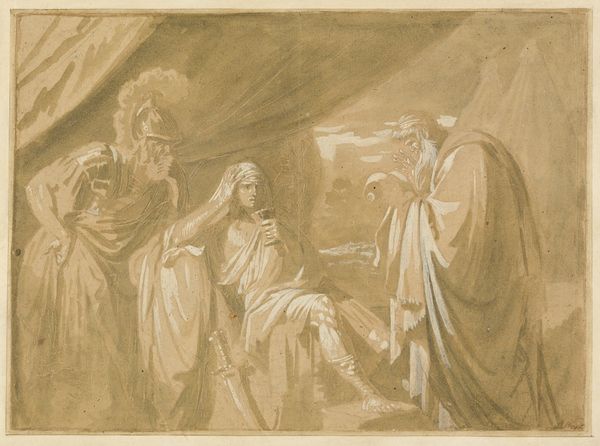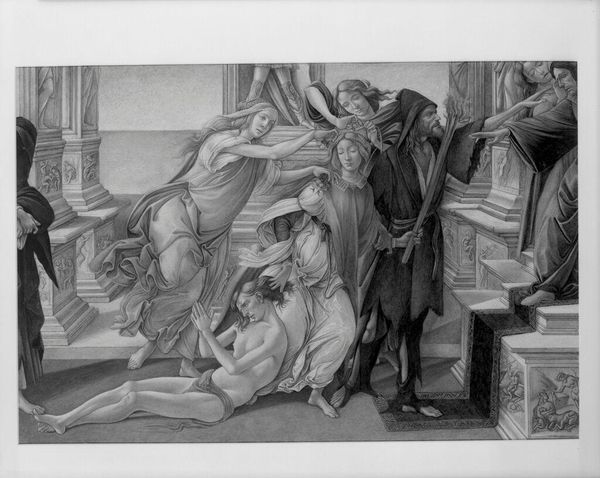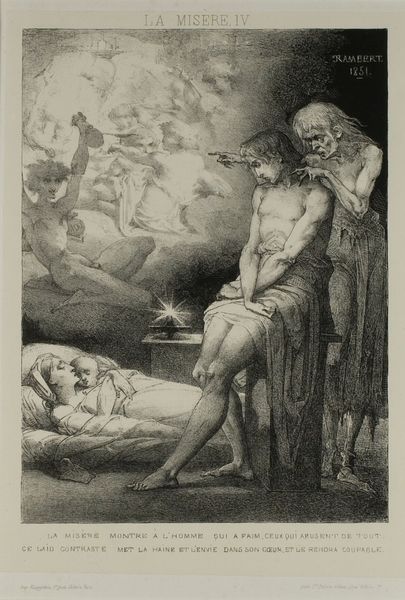
print, engraving
#
portrait
#
neoclacissism
#
allegory
# print
#
figuration
#
portrait reference
#
line
#
portrait drawing
#
history-painting
#
engraving
Dimensions: 405 mm (height) x 542 mm (width) (bladmaal), 376 mm (height) x 477 mm (width) (plademaal), 345 mm (height) x 464 mm (width) (billedmaal)
Curator: Here we have "Sokrates," an engraving created in 1786 by J.F. Clemens, residing in the collection of the Statens Museum for Kunst. Editor: It feels instantly melancholic. The somber tones and the pensive pose create this immediate air of introspection and perhaps even resignation. Curator: Engravings like this were crucial in disseminating Neoclassical ideas and imagery. Look closely at the precise lines, how the figure of Socrates is rendered with almost sculptural clarity, characteristic of the era's interest in classical antiquity and its philosophies. Consider, too, the labor that goes into the craft; each line etched into the plate by hand. Editor: I’m drawn to the figures hovering behind him, so ephemeral and suggestive. The ghostly couple locked in embrace really underscores themes of mortality and maybe even the pursuit of higher ideals. Could these be representations of love, longing, or even philosophical concepts? Curator: It certainly begs the question of interpretation. This image’s existence speaks volumes about the art market, designed to appeal to an educated elite who could appreciate its subject matter and skill, those consuming this product also held specific values in common regarding education and philosophy. The cost of commissioning such an engraving versus, say, a simple woodcut also delineates the audience very clearly. Editor: Beyond that context, Socrates represents a complex symbol, a martyr for truth. Even his simple garments become emblematic of a certain moral rectitude, stark against those embracing figures. Curator: Right. The paper itself, and the ink used to create this print, were produced by specific trades that contribute to an accessible understanding of history, reflecting economic realities and social values related to material culture of the time. Editor: Reflecting on "Sokrates," I’m left pondering the weight of ideas, and the persistence of these timeless symbols throughout our own histories. Curator: Absolutely. When you begin to dissect and explore the economic and social structure within which art such as Clemens’ piece here was created, an artwork expands beyond aesthetics and representation, transforming into an actual fragment of the historical record.
Comments
No comments
Be the first to comment and join the conversation on the ultimate creative platform.
